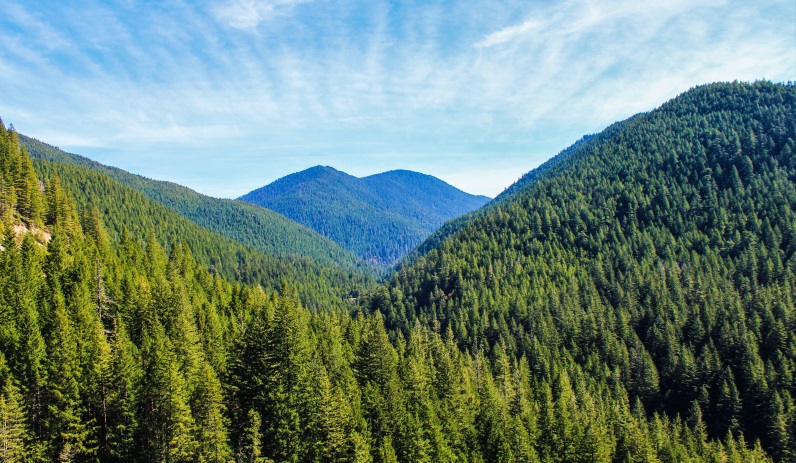The other science instructors and I arrived for the 2011 Opal Creek Ancient Forest Center season in early April. Snow still lay on the ground and there was a chill in the air. I woke up nearly every morning, shivering because my fire did not make it through the night. I would quickly bound out of bed and wrap myself in warm clothes complete with my heavy winter coat.
Now at the beginning of July, the warm weather is here to stay and I no longer need to make a fire in the evenings to keep my cabin warm. As I have experienced this transformation in weather and my own personal comfort, I have seen the snow disappear and new activity come to life.
The plants and animals understand this yearly change and have been in constant movement preparing to bring their young into the world. The most visible signs of this new activity have been the beautiful spring blossoms and the birds carrying nesting materials in their beaks. Amid this change from cold to warm we have been fortunate to share this new activity with many school groups, cabin renters, and hikers from around the region.
As a science instructor, I have been in constant contact with the many students that the center inspires through hosting school groups. The center inspires students to learn because of the unique hands-on educational opportunities that the ancient forest offers. The natural beauty of the area immediately inspires students as they arrive at the trailhead that leads them ever deeper away from civilization until they reach the historic mining town of Jawbone Flats, 3.1 miles away. Their excitement is always palpable during the interpretive talk, and I am bombarded with questions as they gather information about everything they are experiencing.
The interpretive hike is just thebeginning of the unique hands-on education that they receive during their stay here. The curriculum changes according to the needs of the school group visiting but their excitement is always the same. On one evaluation form following a school visit, I received this comment: List your least favorite activity – leaving. That comment really touched me and made me very aware of the positive effect we are having through our program.
The curriculum is based on all sorts of scientific principles that are present here such as ecology, geology, history, biology, and botany. Stream ecology is my favorite curriculum to teach. Following a classroom introduction on stream ecology, students head down to the stream side to search for macroinvertebrates. Macroinvertebrates are aquatic insects that are used as bio-indicators of stream health. The students capture the aquatic insects with nets and place them in ice cube trays for identification. Once identified, students can interpret their significance to the health of the stream. When the lesson is over, the macroinvertebrates are returned to the stream. This is my favorite curriculum because the students learn a lot about streams while having fun.
My last school group of the spring season was Buckman Elementary in early June. I have had a great spring season and look forward to school groups returning in the fall. We will soon begin to transition from hosting school groups to hosting our summer backpacking expeditions. I am excited to spend more time at Opal Creek and meet many new people that visit and are inspired by this beautiful forest.


